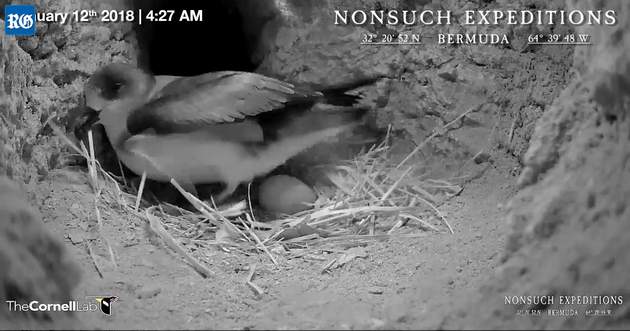Recent News
5 Ft Long Dead Moray Eel Washes Up On BeachTuesday, August 20, 2013
[Updated] What appears to be a dead eel was found washed up on an east end beach this afternoon [Aug 20].
Bermuda Zoological Society's "Reef Watch"
Monday, August 19, 2013
The Bermuda Zoological Society is hosting a “Reef Watch” on Saturday, August 31, which is designed to raise funds for reef conservation. Boats will depart at 12 noon, and the field report and dinner will take place at Barr’s Park from 4pm to 7pm.
Volunteers wanted for Island's first Reef Watch
Monday, August 19, 2013
The Bermuda Zoological Society (BZS) is calling all citizen scientists to help them carry out a health check on one of Bermuda’s most valuable resources — its coral reef system.
BAMZ curator hopes dolphin is outside the reefline
Friday, August 16, 2013
Authorities are still on the lookout for the lone dolphin that was feared stranded in Somerset Long Bay.
UK Zoo continues work with Bermuda skinks
Thursday, August 15, 2013
After finding themselves a new home in the Chester Zoo in the United Kingdom earlier this summer, the troubled Bermuda skink is getting a new chance at success as a species as zoo officials begin putting together a guide aimed at helping those with a hand in conservation services on the island to more easily breed and protect the highly endangered lizard.
About
GovernanceAbout Us
Newsletter
Latest News
Gift & Bookstore
Contact
General Inquiries
info@bzs.bm
Latest News
All the latest updates and news from the Bermuda Aquarium, Museum, and Zoo, one of Bermuda's leading visitor attractions!
Owain Johnston-Barnes
Published Jan 15, 2018 at 8:00 am (Updated Jan 15, 2018 at 12:20 am)

This year’s cahow breeding season could be a record breaker, experts predicted yesterday.
Two thirds of the 125 known breeding pairs were nursing eggs by Friday.
And viewers of the CahowCam — a livestream of a nest on breeding site Nonsuch Island — were able to watch one of the endangered birds lay its single egg early yesterday morning.
Jean-Pierre Rouja, team leader of conservation group Nonsuch Expeditions, said the egg was laid at about 4.30am and marked the start of the sixth CahowCam season.
Mr Rouja added that the Bermuda team had signed off at 3am, but their partners from US-based Cornell Lab of Ornithology, who are in Hawaii to install a similar camera to track albatrosses, tweeted the event and alerted Bermuda.
Mr Rouja said that last year, with the support of Cornell, the CahowCam reached 600,000 international viewers who watched a total of 8.5 million minutes of footage.
He added: “As we expand the project, including new ways for our viewers and students to engage, we expect to greatly exceed those numbers this season.”
The same pair of cahows has used the filmed nest since 2009.
Jeremy Maderios, government chief conservation officer, said the pair’s egg last year took 51 days to hatch. Male and female birds take turns to care for the egg.
Mr Madeiros said: “After a record-breaking nesting season last year with 61 chicks fledging out to sea, we seem to be on track for breaking even more records this year.”
The majority of incubating adult cahows he had examined were heavier than normal, with some male birds approaching 500 grams.
Mr Madeiros said that suggested the birds had found good feeding conditions north of the Gulf Stream over the last month.
To watch the livestream, visit Nonsuchisland.com.
Anyone interested in updates on the cahows can also sign up for the Nonsuch Expedition Newsletter and select the CahowCam alert option.


